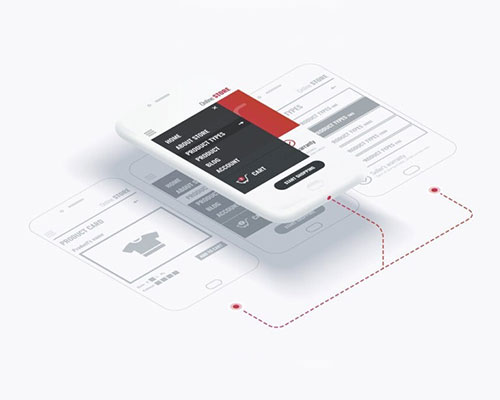The Importance of User Experience in Website Design

In today’s digital age, having a website is essential for any business to succeed. However, simply having a website is not enough. Your website must also provide an exceptional user experience (UX) to effectively engage visitors and achieve your business objectives. In this blog post, we will discuss the importance of user experience in website design and how it can impact your business.
What is User Experience (UX)?
User experience, or UX, refers to the overall experience that a user has while interacting with a website or application. It encompasses everything from the ease of navigation to the design and layout of the website, the quality of the content, and the speed at which pages load.
The goal of UX is to create a positive and seamless experience for the user that is intuitive, efficient, and enjoyable. Good UX design is important because it helps to keep users engaged, promotes trust, and encourages them to return to your website again and again.
Why is User Experience Important in Website Design?
1. First Impressions Matter
Your website is often the first point of contact that a potential customer has with your brand. A well-designed website with a great user experience can create a positive first impression and help to establish trust and credibility with your audience. On the other hand, a poorly designed website can quickly turn visitors away and damage your brand’s reputation.
2. User Engagement
User engagement is crucial to the success of any website. If your website is difficult to navigate, slow to load, or lacks clear calls to action, visitors will quickly become frustrated and leave your site. A well-designed website with a great user experience, on the other hand, can encourage visitors to spend more time on your site, explore your content, and ultimately convert into customers.
3. Search Engine Optimization (SEO)
User experience is also important for search engine optimization (SEO). Search engines like Google place a high value on websites that provide a great user experience. If your website is well-designed and easy to use, it will rank higher in search results, leading to increased visibility and traffic.
Read more about our Search Engine Optimization Services.
4. Brand Image
Your website is a reflection of your brand. A poorly designed website can damage your brand image and turn potential customers away. A well-designed website with a great user experience, on the other hand, can help to reinforce your brand’s values, and messaging, and position you as a leader in your industry.
5. Increased Conversions
Ultimately, the goal of your website is to convert visitors into customers. A great user experience can help to make this happen by making it easier for visitors to find what they are looking for and take the desired action. By optimizing your website for user experience, you can increase conversions and ultimately drive more business.
Key Phases of User Experience Design
By paying attention to the key phases and principles involved in UX design, UX designers can create engaging, user-friendly digital experiences that meets the needs of both the business and its target audience. These phases typically include;
- Research: The first phase of UX design is research, which involves gathering information about the target audience, their needs, and their preferences. This information can be collected through surveys, interviews, user testing, and other methods.
- Analysis: After gathering data in the research phase, the next step is to analyze it to identify patterns and insights. This analysis can help to inform the design process by revealing user needs, pain points, and opportunities.
- Design: In the design phase, UX designers use the insights gained from research and analysis to create wireframes, mockups, and prototypes of the user interface. This phase involves making decisions about layout, navigation, content, and other design elements that will impact the user experience.
- Testing: Once the design is in place, UX designers conduct testing to gather feedback from users. This testing can involve usability testing, A/B testing, and other methods to evaluate the effectiveness of the design and identify areas for improvement.
- Implementation: After testing and refining the design, the next phase is implementation, which involves actually building the user interface. This can involve working with developers and other stakeholders to ensure that the design is implemented correctly and meets the needs of the target audience.
- Maintenance: The final phase of UX design is maintenance, which involves ongoing monitoring and refinement of the user interface. This can include making updates based on user feedback, fixing bugs, and optimizing the design for performance and usability.
Throughout each of these phases, UX designers work to understand the needs and preferences of the target audience, evaluate design options, and create intuitive interfaces that meet user needs.
Conclusion
In today’s competitive online landscape, having a website with a great user experience is essential to the success of your business. By focusing on the needs and preferences of your users, you can create a website that engages visitors, reinforces your brand image, and ultimately drives business growth. So, if you want to stay ahead of the competition, be sure to prioritize user experience in your website design.
Related article: Optimize your WordPress Website for the Best Performance
—
Do you need professional help on your WordPress website? Reach out to us via email wp@wordpress.ug or Whatsapp (+256) 774-633091



